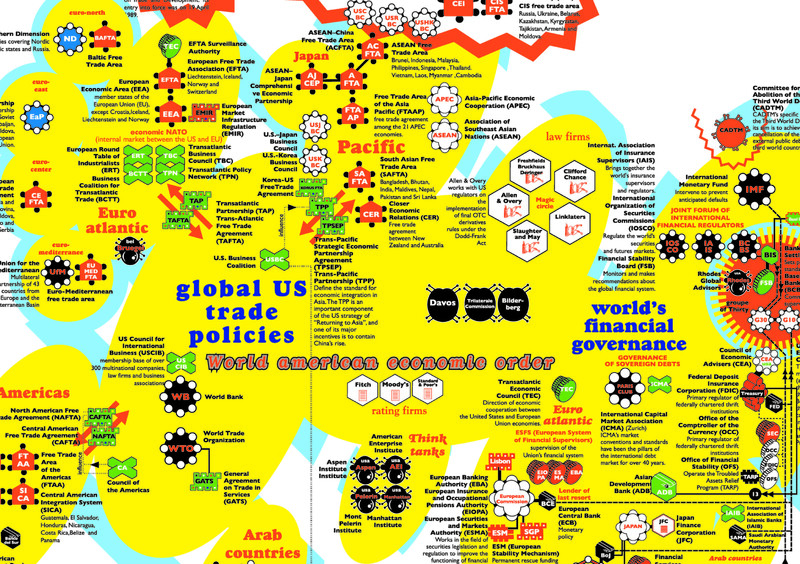

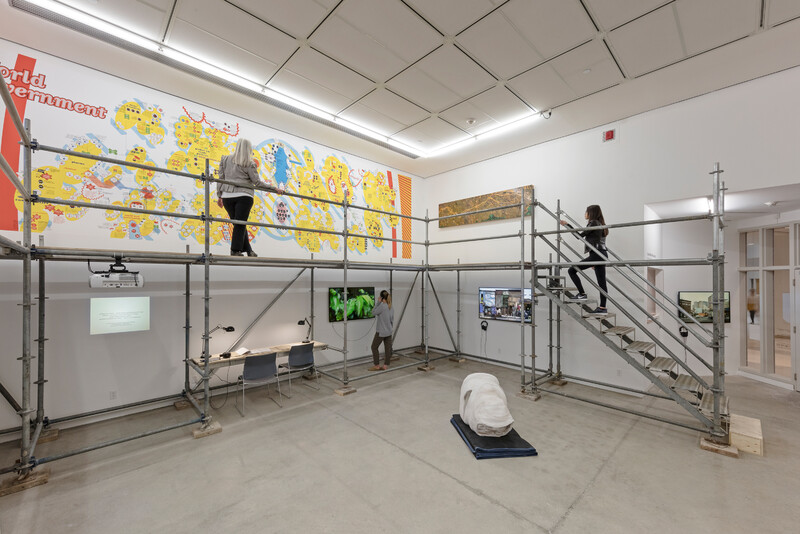
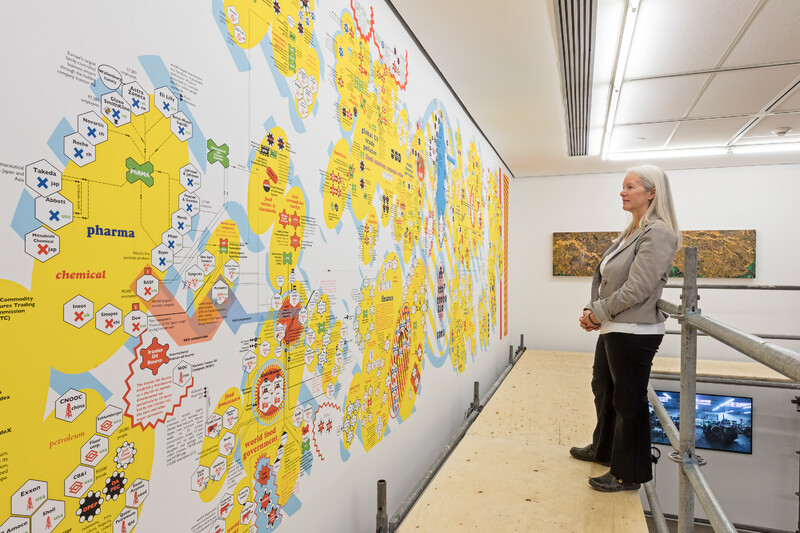
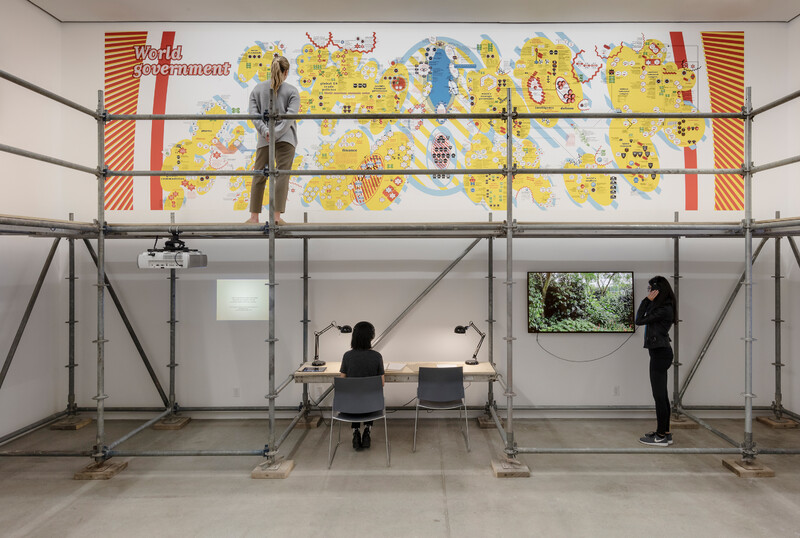
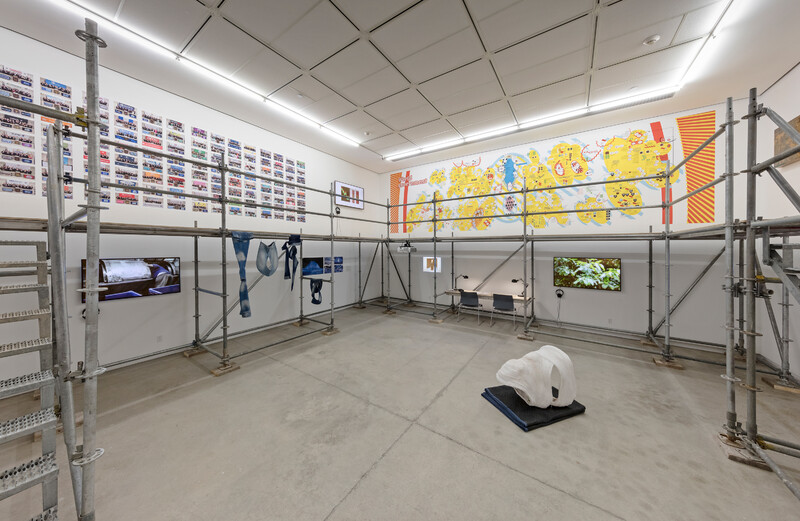

World Government
World Government is a meticulously detailed map organized in two main parts. The left region of the map presents a range of agencies of global political-economic power, which, since the Second World War, have been strongly shaped by the US empire. Populating this side of the map are geopolitical “free-trade” blocs, a complex of cartels and oligopolies in key domains of commodity production (ranging from food to pharma to petroleum), and, the core of this part of the map, the global financial node, spanning corporate banking institutions, tax havens, and stock exchanges. The right side of the map details international politico-military agreements, which are conjoined to the system of trade territories. Alongside the imperial-military complex, whose elements range from state surveillance programs to defence contractors, this region of the map presents the soft-power complex of the public relations and entertainment industries—the peacekeeping producers of desire and consent—as well as institutions of Internet infrastructure underpinning these industries. Accompanied by a pictographic to aid in navigating this cartographic research, the map presents, in aggregate, a constellation of inter-linked power structures constituting a veritable World Government. There is no dictator inhabiting the center of this map. Rather, World Government reveals a networked system, a network that is nonetheless composed by a control class, which, consciously or unconsciously, seeks to reproduce its power in and through this network. Puncturing this vast map of the global political economy of contemporary capital are, however, nodes of organized dissent.

The Blackwood
University of Toronto Mississauga
3359 Mississauga Road
Mississauga, ON L5L 1C6
[email protected]
(905) 828-3789
The galleries are open. Hours of operation: Monday–Saturday, 12–5pm.
Holiday hours: regular gallery hours are in effect until and including Saturday, December 6. The galleries will then be closed for the holidays, except for regular hours on Saturday, December 13. In 2026, the galleries reopen Monday, January 5.
Facebook | Twitter | Instagram
Sign up to receive our newsletter.
The Blackwood is situated on the Territory of the Mississaugas of the Credit, Seneca, and Huron-Wendat.